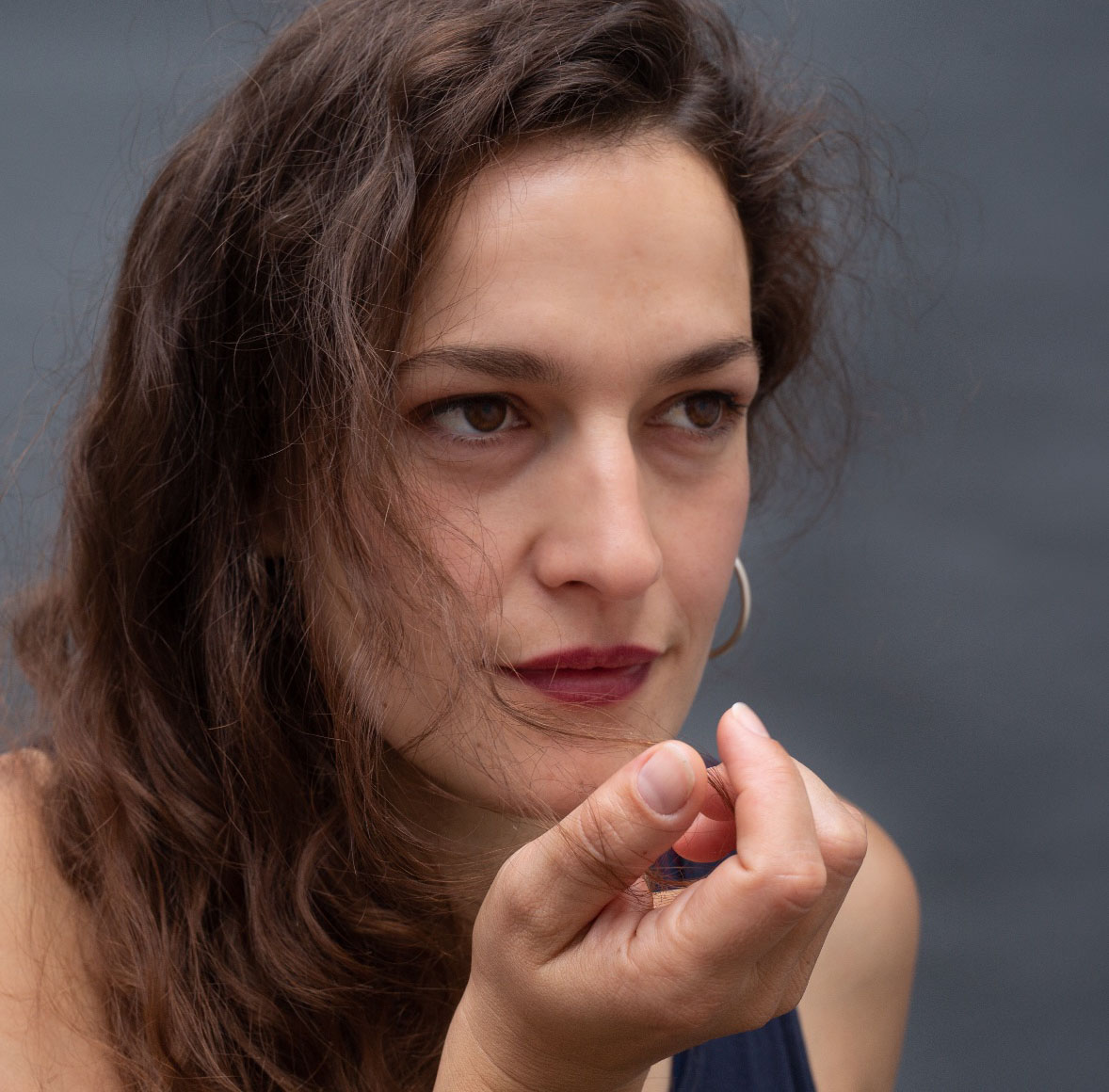

Alessia is a choreographer, scenographer, and researcher in live arts, based between France and Belgium, with Swiss and Italian roots. For over 13 years, she has developed a transdisciplinary practice across contemporary dance, visual arts, dramaturgy, and socially engaged research. Trained in trompe-l’œil painting, metallurgy, stage design (Saint-Luc Brussels), and choreographic composition (ISAC – ARBA-ESA), she explores gesture as a site of memory, opacity, and resistance.
Her works have been presented internationally — from Europe to Latin America — including Selk Nord (Beautiful Alien Object), Naturalizaçao, Norma Arm and To Cajole. She collaborates with artists such as Rakesh Sukesh, Clara Henry, Charlotte Vanden Eynde, Hippolyte Bohouo, Gesine Moog, Lorenzo De Angelis and Dora Garcia.
She regularly contributes to choreographic dramaturgy, most recently for Because I love the diversity (this micro-attitude we all have it).
Alessia teaches her composition method “Autonomous System” at institutions like Saint-Luc Brussels and Liège (BE), ArtEZ Arnhem (NL) and Universidad de Chile (CL). She is the founder of the cooperative En Archipel, an associated artist with Les Thérèses Production (Toulouse) and a member of the RAC (Brussels). Her work focuses on process-based forms and shared perception between audience and performer.
The Autonomous System is a Choreographic Writing System
It functions like the autonomic nervous system, triggering the involuntary movements of our bodies. This mechanism generates movements that escape conscious control. In the same way that autonomous groups—such as anarchists, feminists, or situationists—create independent and alternative systems, I draw inspiration from this approach to develop a form of choreography that values involuntary movement and spontaneous interaction.
This choreographic system includes specific pathways, defined gestures, and precise relationships between dancers, music, and rhythm. It is structured within a clear framework that serves as a kind of recipe or set of tools, enabling dancers to improvise. Although the movements are improvised, they remain grounded in a system of interconnected scenic elements.
Choreographing involuntary movements presents a challenge similar to organizing anarchist groups, for example. It involves creating autonomous systems that allow dancers to express themselves freely while remaining part of a coherent whole. These systems celebrate fragile and non-normative bodies—those often hidden by society. By making these involuntary movements visible, such as those seen in neurodegenerative diseases, we bring value to what society tends to marginalize or ignore.
My choreographic work aims to shed light on and give importance to involuntary movement and fragile bodies. By presenting bodies that do not conform to social standards of strength and control, I open a space for vulnerability and bodily diversity. These movements—often seen as strange or unconventional—are essential to understanding the richness and complexity of the human experience. I value involuntary movement and fragile bodies, showing that what is often hidden or marginalized can become a powerful source of creativity and inspiration.
During training sessions, I activate reflexes using TRE (Tension & Trauma Releasing Exercises) to encourage involuntary movement. These training sessions are not merely technical exercises, but moments where performers learn to free their bodies from the constraints of conscious will. They learn to respond instinctively to stimuli, to embrace unpredictability, and to find beauty in what is often perceived as chaotic or unconventional.
r e s e a r c h